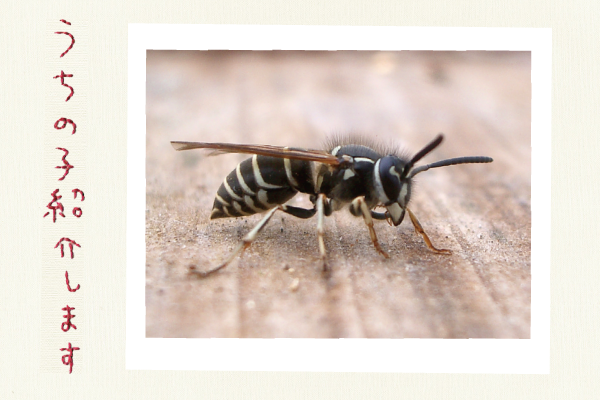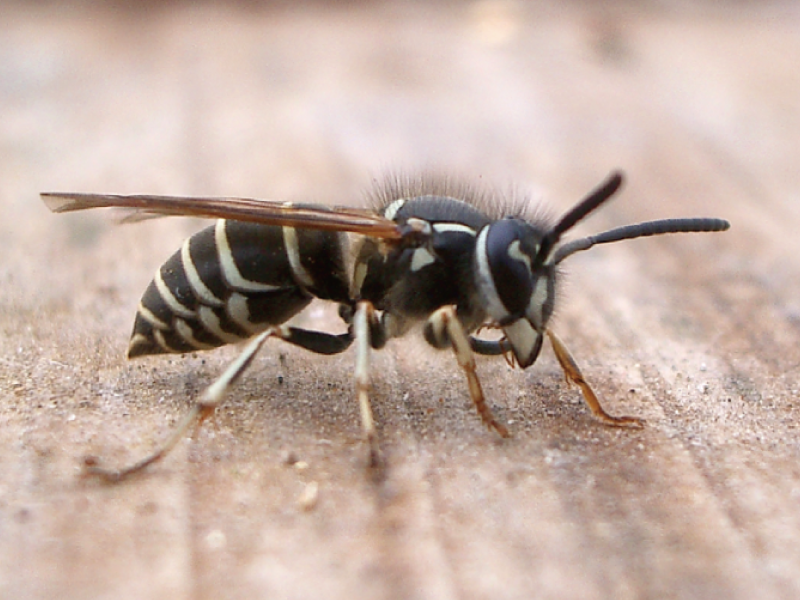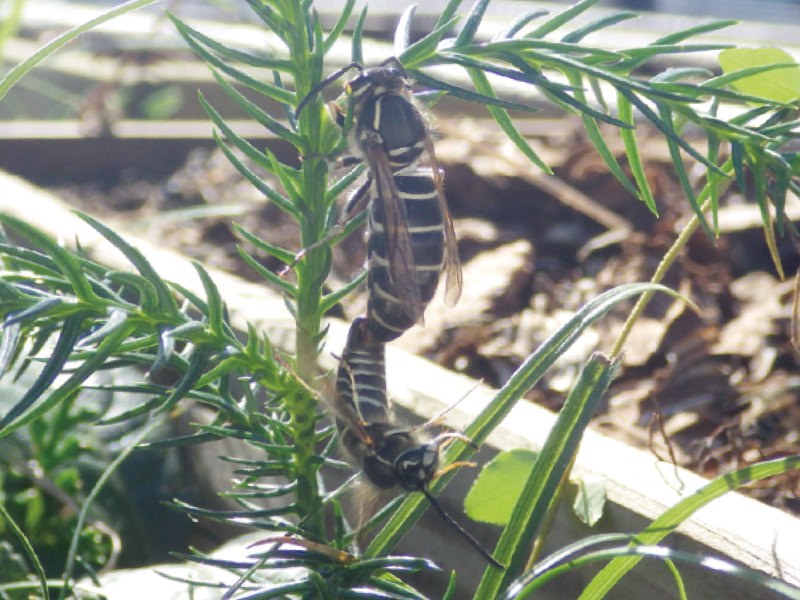- someone
- Information for Middle and High School Researchers
Introducing Our Children (56): Infection Control in a Large Family Life: The Fern-cross Wasp
2021.07.18
Here we introduce the living creatures that are the subjects of our research. We will write about the interesting and fascinating aspects of these creatures, which we know because we deal with them every day.


The black-and-white striped wasps are distributed in Honshu from low mountains to mountainous areas. They live in groups in nests mainly in the soil, and prefer to feed on small insects and the flesh of dead frogs, fish, and other animals rather than pollen. In the Tokai region, it has been bred and collected by local people as an edible insect and is known by the nicknames "hebo," "jibachi," "takabu," and "sugaree.
Living together in a blood-related family, the family members of the weaver wasp divide the work of caring for the offspring and maintaining the nest. A single queen bee is responsible for the production of offspring and mates with several males. It has been believed that the production of offspring with different fathers increases genetic diversity and prevents the spread of disease to all members of a family living in a crowded environment. However, until now, the truth has not been confirmed for any species of wasp, not only the civet wasp, but for all members of the wasp family.
To test his hypothesis, Dr. Tatsuya Saga, a special cooperative researcher at Gifu University, turned his attention to the fern wasp, which lives in soil where pathogens are abundant and has been the subject of breeding in the Tokai region. Upon investigation, they found a queen bee with mold growing from a collapsed nest and thought that mold infection was the cause of death. With the help of local bee enthusiasts, they collected fungi from dead larvae and infected multiple worker bees to determine the difference in the number of days of survival. The results showed that the number of days of survival after infection with the fungus differed among bees with different fathers, indicating that the resistance to the pathogen was different among bees with different fathers. These results indicate for the first time in the wasp family that the wasp may be able to prevent infection by creating genetically diverse families.
Compared to the wasp, which is famous for its ferocious nature, the Japanese hornet is not as well known as the wasp. This local, behind-the-scenes player in human life is becoming a key player in revealing the secret of how wasps can maintain a large family even in a "three-density" environment.
(Text: Yun, Koh Chul)
Interviewed by: Mr. Tatsuya Saga, Special Cooperative Researcher, Gifu University / Teacher, Tajimi High School, Gifu Prefecture
'Thesomeone vol.55From "The
